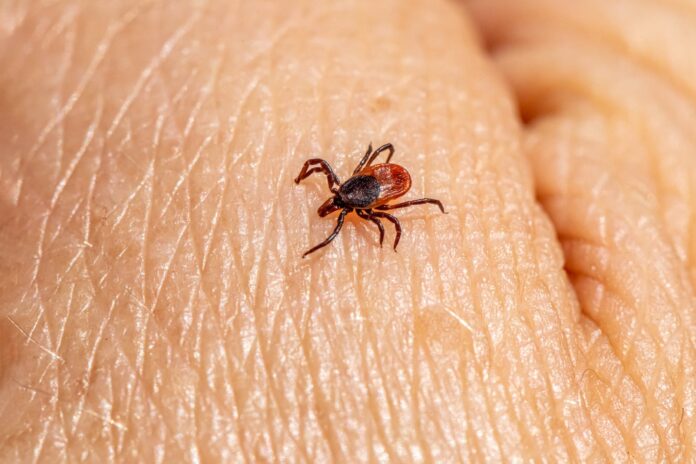Imagine this: your child complains about feeling unwell, with a fever and unusual headaches. A trip to the doctor leads to a concerning diagnosis — a mosquito-borne viral infection rarely seen in Canada. This is the reality for a growing number of Canadians, as insect-borne illnesses are on the rise, posing a significant threat to public health.
A buzzing problem
Lyme disease, West Nile virus — these are just a few familiar names on the list of insect-borne illnesses. But what’s causing the surge in these diseases, and what does it mean for Canadians?
As Dr. Isaac Bogoch, an infectious diseases specialist from the University of Toronto and UHN Researcher, explains to CBC, “We’re seeing shorter winters — winters that aren’t as cold — and basically the expansion of insects that can transmit these infections.”
This expansion is largely attributed to climate change, with warmer temperatures allowing mosquitoes and ticks to thrive for longer periods and establish themselves in new areas.
The story of Kathryn McKissock, whose son contracted Jamestown Canyon virus in their own backyard, highlights the growing concern. Traditionally, such illnesses were associated with travel to specific regions. However, as insect ranges expand, so does the risk of encountering them in your own neighbourhood.
Dr. Amila Heendeniya, a clinical infectious diseases physician at the Winnipeg Regional Health Authority and an assistant professor at University of Manitoba, says that “[s]omething is changing, either [through] climate change, the environment, and the urban sprawl — how we’re getting closer and closer to the woods.”
The looming threat
The true scope of the problem might be even greater than reported figures suggest. Limited awareness among healthcare professionals and the public can lead to misdiagnosis and underreporting.
Dr. Dick Zoutman, an infectious diseases specialist with Queen’s University in Kingston, Ontario, cautioned against complacency even though the official counts remain small.
“Of course, it starts out that way,” he said. “And then what it’ll look like five years from now, we can only imagine — but we’ve seen how Lyme disease just exploded across Canada.”
This lack of awareness can have serious consequences, as delayed diagnosis can impact treatment outcomes. While familiar illnesses like Lyme disease and West Nile virus are concerning, the emergence of lesser-known threats like Powassan virus and Eastern equine encephalitis adds another layer of complexity.
These viruses, also transmitted by insects, can cause severe illness and even death. The situation becomes even more alarming when considering the potential impact of climate change. Studies predict a significant increase in tick and mosquito populations in the coming decades, further amplifying the risk of transmission.
Protecting ourselves
In the face of this growing threat, what can we do to protect ourselves?
Dr. Richard Mather, a public health physician, offers practical advice: “Wear long, light-colored clothing, use insect repellent, and avoid being outdoors during peak mosquito activity times.” Additionally, eliminating standing water sources around your home can help reduce mosquito breeding grounds.
While individual actions are important, collective efforts are crucial. Public health agencies need to invest in robust surveillance programs to track the spread of these diseases and raise awareness among healthcare professionals and the public. Additionally, research into prevention and treatment strategies, including the development of vaccines, is essential to combat this growing public health challenge.
The rise of insect-borne illnesses is a complex issue with no easy solutions. However, by understanding the factors contributing to this problem, taking individual precautions, and supporting collective efforts, we can better protect ourselves and our communities from the buzzing threat of these diseases.
Remember: knowledge is power. By staying informed and taking action, we can help mitigate the risks and ensure a healthier future for all.








































